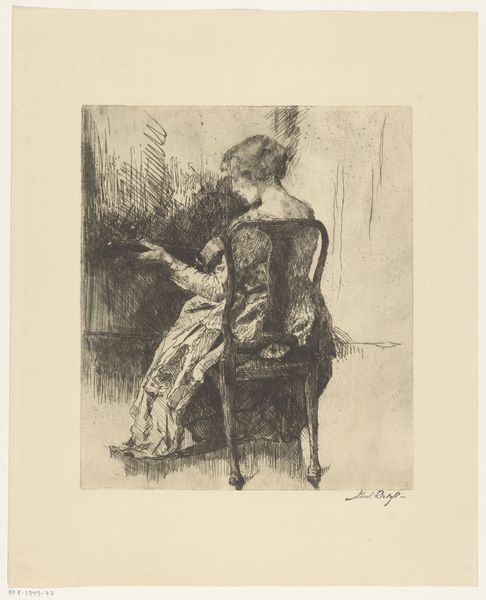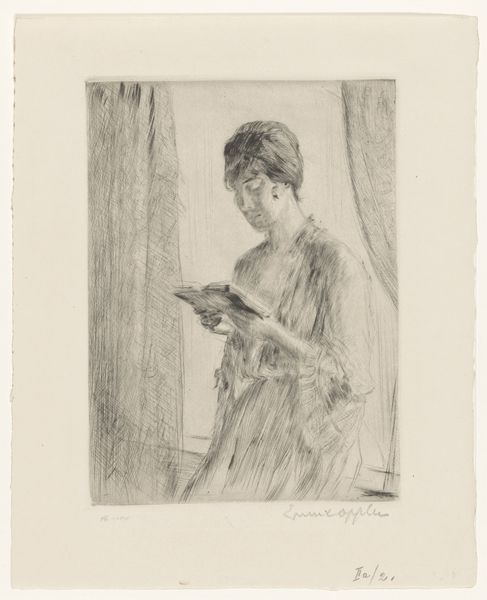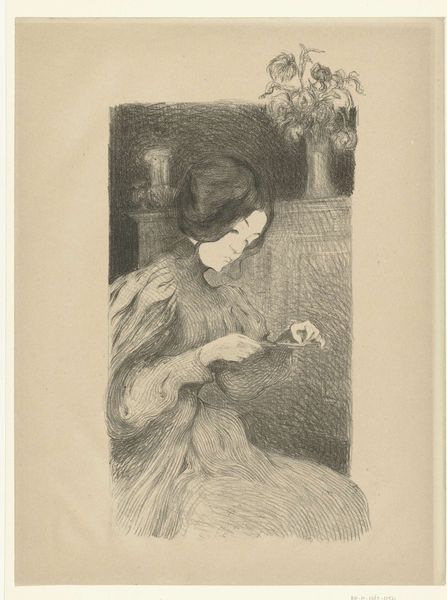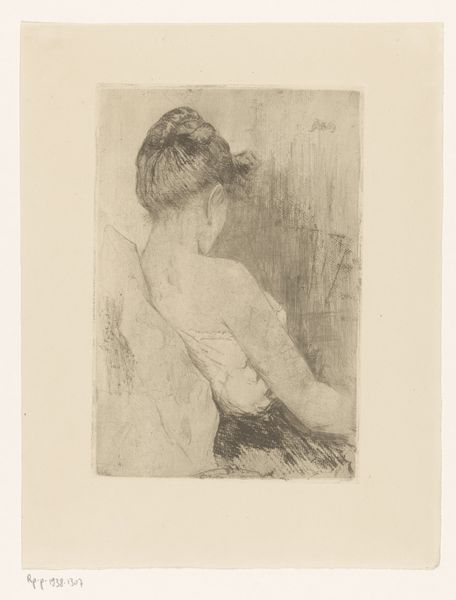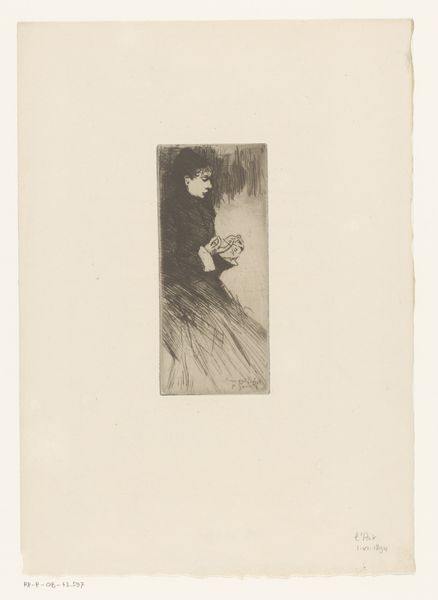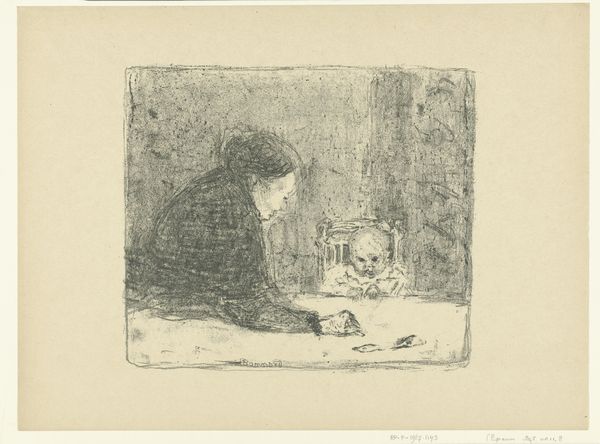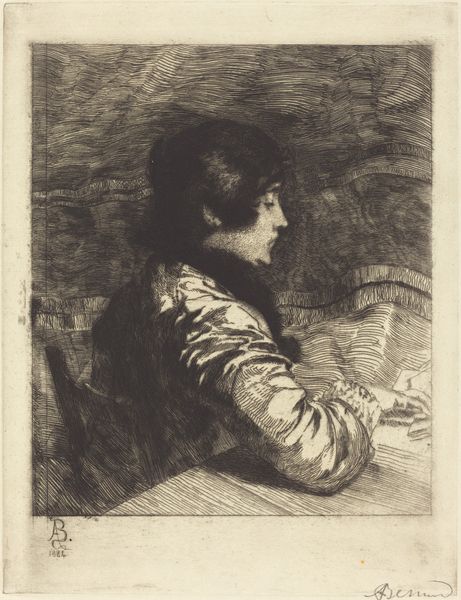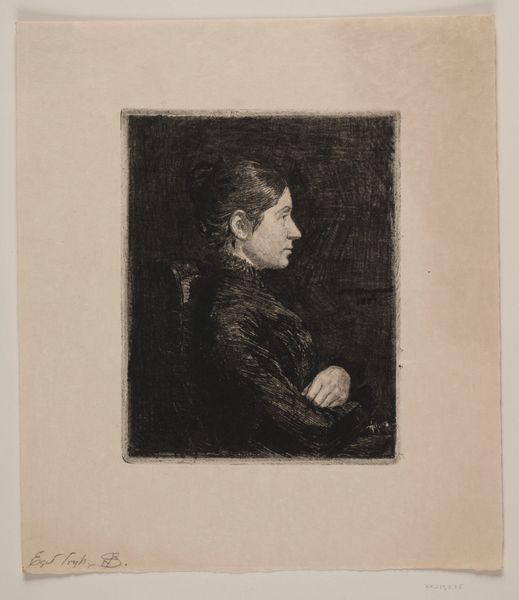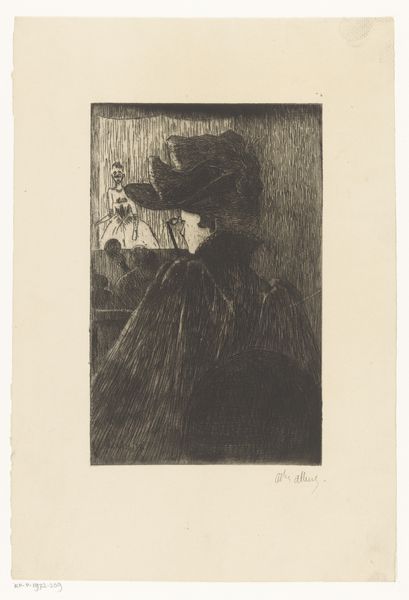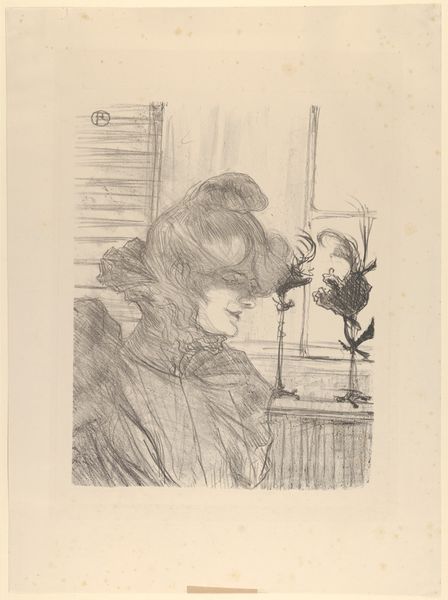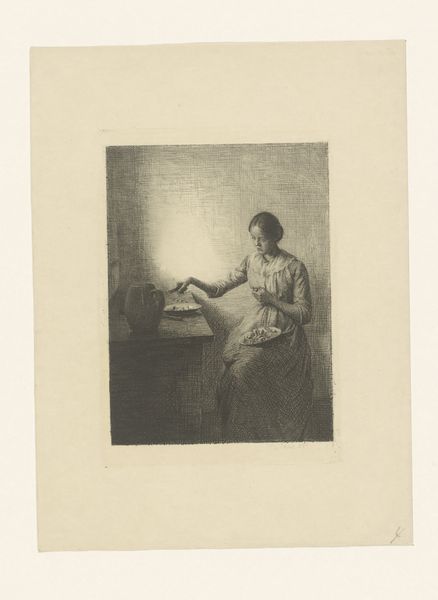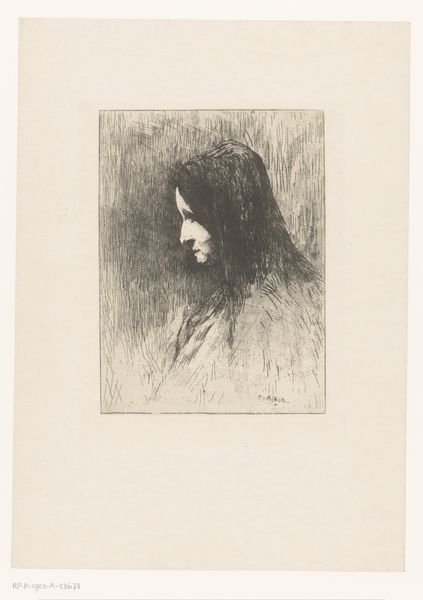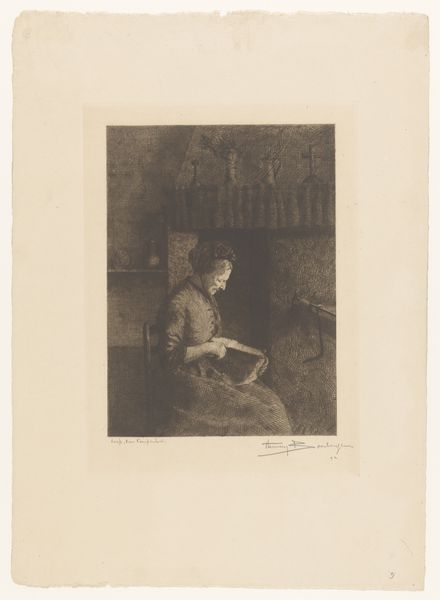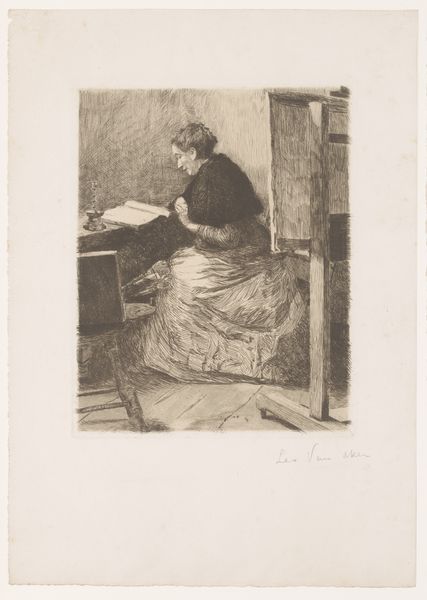
drawing, print, etching
#
portrait
#
drawing
# print
#
impressionism
#
etching
#
genre-painting
#
realism
Dimensions: height 148 mm, width 100 mm
Copyright: Rijks Museum: Open Domain
Curator: Let's consider this etching by Willem de Zwart, created around 1888. It’s titled "Zittende vrouw naaiend bij het venster," which translates to "Seated Woman Sewing by the Window." Editor: My first impression is one of quiet domesticity, but with a certain somber quality. The limited tonal range of the etching adds to this feeling. There's a sense of intimacy, but also perhaps a hint of constraint. Curator: That's interesting. I’m struck by the etching itself. The marks made to create the shadows and give shape to the scene suggest that Zwart prioritized the direct application of the etching tool to achieve that very soft atmospheric effect rather than the pursuit of minute detail, for instance. What about the woman, how does she strike you? Editor: Her downcast gaze is interesting. Sewing, traditionally women's work, can represent both productivity and constraint, doesn’t it? Think of the symbols of thread throughout mythology and fairy tales, the connection of fates. She's positioned by a window, almost like she is viewing a potential outside world, which creates the sense of longing I immediately perceived. The way Zwart used line suggests more than just everyday labor, there's something else happening in her psyche. Curator: Indeed. And perhaps Zwart intended to highlight that dual nature, work which confines and work which frees, given the material realities of many women's lives in 1888. Sewing at this time was not merely a domestic task; it was also a vital economic activity, especially for women of modest means. And prints such as this made art accessible to such women. Editor: That contextual piece enriches our appreciation. She embodies the weight of responsibility, and it resonates with social implications. The window then takes on a further symbolic significance, perhaps of unfulfilled potential. The viewer projects so much more on this ordinary action! Curator: This print exemplifies how de Zwart's exploration of a common subject unveils multiple perspectives related to gender, labor, and class. His technique adds texture, while imbuing it with contemporary context. Editor: For me, tracing these cultural echoes amplifies our engagement with it. I see layers of narrative beyond the surface portrayal. Curator: Absolutely. Both the material aspects of its creation and its potential symbolic layers combine to produce a deeper interpretation.
Comments
No comments
Be the first to comment and join the conversation on the ultimate creative platform.
